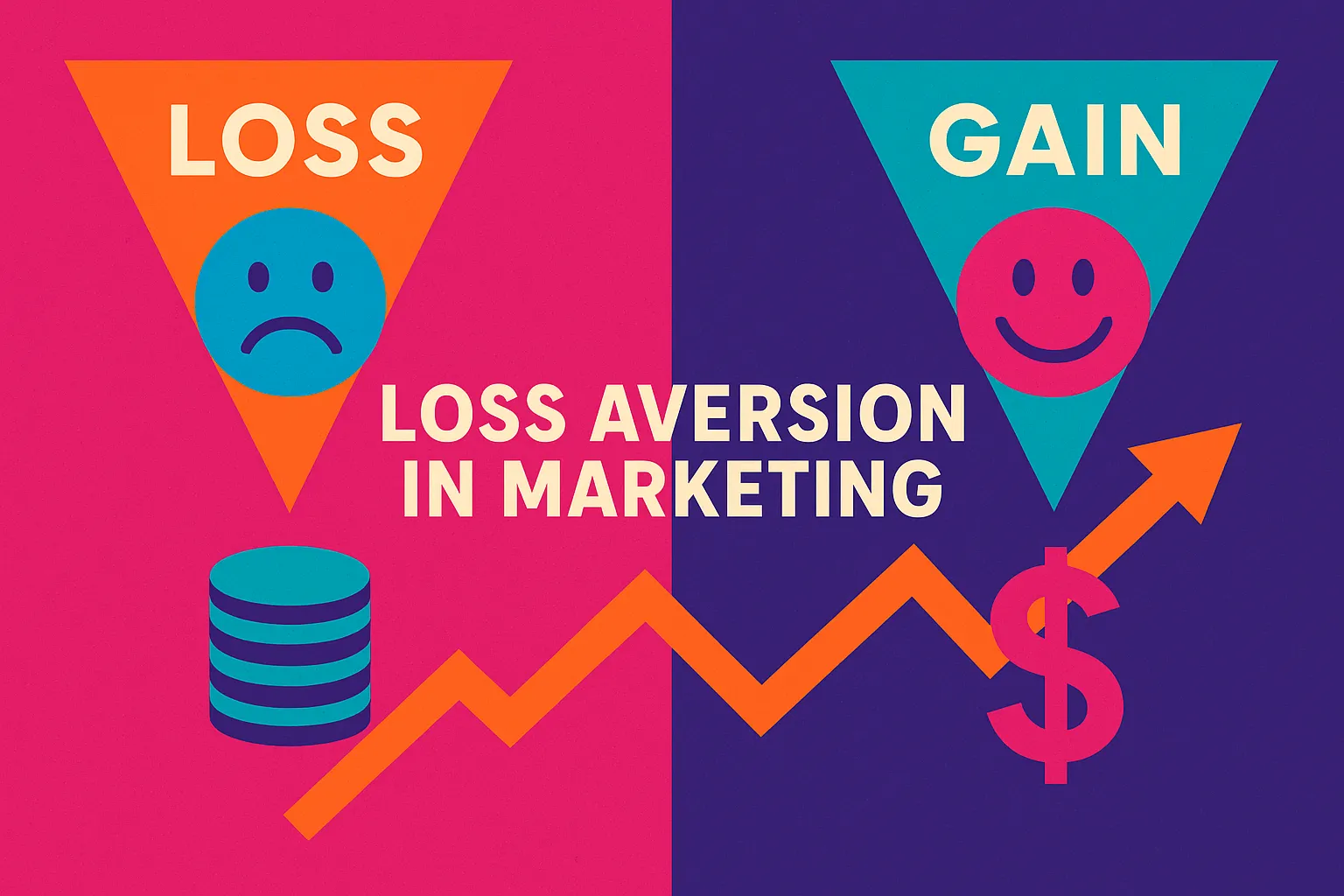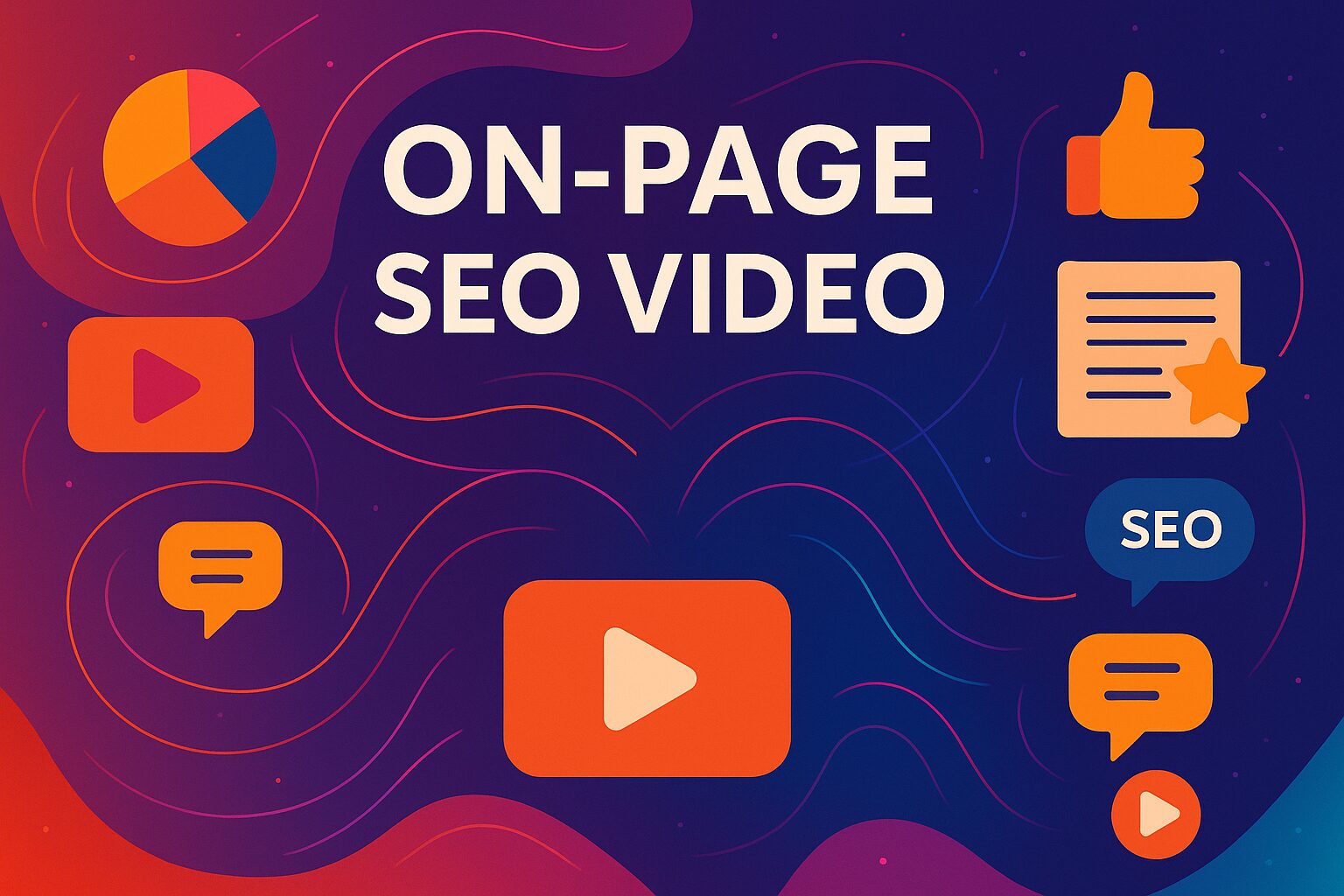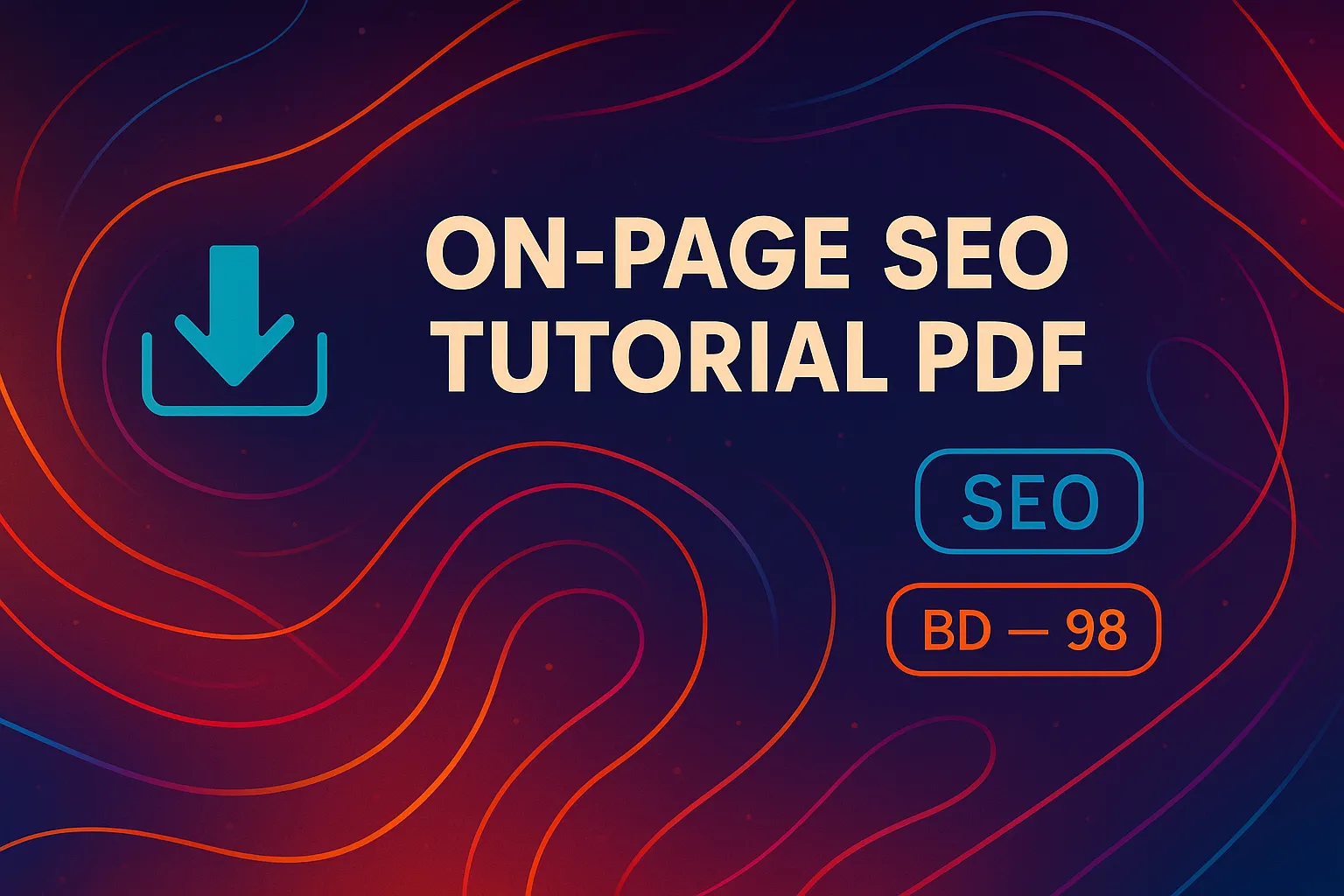What Is an On Page SEO Review?
Let me break this down simply. An on page SEO review is like a full checkup for your website. You’re looking at all the things you can control directly on your pages to make sure they’re helping your site rank on Google.
This includes everything from your content to your headlines, URLs, links, and even how fast your site loads. It’s all about making sure both users and search engines can easily understand, navigate, and trust your site.
When I first started Vibe Branding over a decade ago, one of our early wins came from helping a small local business do just this. Their site looked fine on the surface but buried under poor headers, duplicate title tags, and missing alt text was a ton of lost potential.
After a deep dive, we turned their traffic around in weeks. Since then, we’ve made on page SEO reviews a core part of every strategy we build.
TL;DR (Too Long; Didn’t Read)
- An on page SEO review is the process of checking and optimizing each element of your website to help it rank better in search engines.
- It covers title tags, meta descriptions, headers, internal links, image alt text, page speed, mobile responsiveness, and more.
- At Vibe Branding, we use our 10+ years of experience to guide clients through in-depth on-page audits that improve user experience and boost organic visibility.
- Regular SEO reviews help you stay ahead of algorithm updates and give your site the best chance of showing up on page one.
- This blog will walk you through how we handle an on page SEO review and what you can learn to do it yourself.
Why On Page SEO Still Matters
People ask me all the time, “Is on page SEO still a thing in 2025?” Absolutely.
Google’s algorithm has gotten smarter, but it still starts with the basics. It needs to know what your page is about, and the best way to do that is through clear signals.
That’s what this review process gives you. Think of it like setting up a store window—you want to be obvious, relevant, and appealing at a glance.
Let’s say you’ve written a great article. If your headline is off, your description is vague, or your page takes 10 seconds to load, users will bounce before they even give you a shot.
That’s a loss in engagement, a loss in rankings, and eventually, a loss in revenue. We’ve worked with ecommerce brands, service providers, and agencies across New York who’ve all seen measurable improvement once we addressed these details.

What Do We Actually Review?
When we perform an on page SEO review, we’re not guessing. There’s a proven list of components we analyze.
First is your title tag—does it include your main keyword, and does it fit within 60 characters? Then we check the meta description.
This isn’t a ranking factor on its own, but a well-written one can significantly boost click-through rate. Next are your headers.
Your H1 should be unique and keyword-focused, and your H2s and H3s should structure your content in a logical way. From there, we look at internal links.
Are they relevant? Do they point to valuable pages?
Then we get into things like URL structure, alt text on images, and even schema markup. Each of these plays a part in how your page performs in search and how users experience it.
The Power of Titles, Descriptions, and Headers
From years of watching SEO trends rise and fall, one truth stands out: titles and headers carry a lot of weight. Google still pays close attention to what you say in your title tag and H1.
The closer your keyword is to the beginning of the title, the more weight it tends to carry. But don’t forget humans are reading this too.
It has to be enticing. We once worked with a real estate company whose traffic had flatlined.
When we looked deeper, we saw that their H1 tags were just generic phrases like “Welcome to our site.” After a full on page SEO review, we rewrote their headers to include location-specific keywords.
Their traffic jumped by 34% in less than two months. That’s the power of optimizing the obvious.
Meta descriptions are also essential, not for rankings, but for clicks. If you write something that matches user intent and includes the keyword in a natural way, Google may bold it in the search results.
That visual cue helps draw the eye and increases the chances of someone clicking through.
Internal Linking and URL Structure
This might be the most underrated section of an on page SEO review. Internal links help both users and search engines navigate your site.
At Vibe Branding, we use a strategy that maps out which high-authority pages can pass value to newer or lower-ranking content. It’s like building an SEO highway between your best pages.
We also keep URLs short and clean. A good URL might look like: vibebranding.com/on-page-seo-review.
That tells Google exactly what it’s about, and it’s readable for users too. Long, complicated URLs with numbers and random strings are confusing and dilute keyword power.
If you want to get this right, consistency is key. We’ve seen bounce rates drop by up to 15% just from restructuring internal links and simplifying URLs.
And for SEO, even small changes like this compound over time.

Keyword Usage and Relevance
Every time I explain this to a client, I tell them: it’s not just about the keyword—it’s where and how you use it. We want to see the main keyword in the first 100 words of your content, inside the H1 tag, and sprinkled naturally throughout your headers and paragraphs.
Not crammed. Naturally.
Keyword stuffing is dead. Google now cares about context.
That’s why semantic keywords and related phrases are so important. In our reviews, we use tools like Surfer SEO and Semrush’s On Page SEO Checker to see how well your content covers the topic.
Here’s a quick example:
Area | Keyword Placement | Importance |
Title Tag | “on page SEO review” near the start | High |
H1 Tag | Must include exact keyword | High |
First 100 Words | Natural use of keyword | High |
Meta Description | Include for CTR | Medium |
URL | Short and keyword-rich | High |
As you can see, each section carries different weight, but together they create a cohesive SEO strategy.
Mobile-Friendliness and Page Speed
I can’t tell you how many websites we’ve audited that look great on desktop—but fall apart on mobile. Mobile-friendliness is no longer optional.
Google indexes mobile-first, which means if your mobile site is slow or broken, your rankings take a hit. At Vibe Branding, we use Google’s PageSpeed Insights and Web.dev to audit performance.
We check things like tap targets, font sizes, and whether content fits properly on small screens. We also optimize image sizes, reduce render-blocking resources, and enable lazy loading where it makes sense.
Page speed plays a big role in both SEO and user experience. People simply won’t wait.
A page that loads in under 2 seconds tends to convert and retain visitors better than one that takes longer. And with Core Web Vitals now being part of Google’s algorithm, metrics like Largest Contentful Paint (LCP) and Cumulative Layout Shift (CLS) are directly tied to your performance.
We once worked with a content-heavy lifestyle brand whose bounce rate was over 70%. After implementing page speed improvements during an on page SEO review, we brought it down to 48%.
That’s the power of speed.
Common On Page SEO Mistakes to Avoid
Even experienced marketers make mistakes. That’s why we’re so thorough during every on page SEO review.
One common issue we see is missing or duplicated title tags and meta descriptions. If Google sees multiple pages with the same tag, it gets confused about which to rank.
Another big one? Overusing keywords.
This might have worked in 2009, but now it just signals low quality. The same goes for broken internal links, non-descriptive anchor text, or pages that are buried deep with no backlinks.
All of these send the wrong signals to search engines. We also check for missing image alt text and poor header structures.
Pages with no H1 or multiple H1s can appear disorganized to Google’s crawlers. Clean, consistent structure helps both bots and humans understand your content faster.
These “small” things often separate average pages from top performers.

How Often Should You Review Your On Page SEO?
At Vibe Branding, we recommend running a full on page SEO review at least once per quarter. That may sound like a lot, but with Google rolling out updates more frequently than ever, you need to stay agile.
A content piece that ranked well three months ago might drop off the map if it hasn’t been updated. For fast-moving industries, we even schedule monthly check-ins.
These don’t always require big changes—but they help us catch issues like broken links or outdated meta tags before they affect performance. If you’re pushing out new content weekly, then real-time auditing tools are a must.
Consistency is key. The more often you audit, the easier it is to spot trends and stay ahead of your competitors.
Think of it like regular maintenance for a car. Skipping it may save time today, but it could cost you rankings down the line.
Measurable Results You Can Expect
So what kind of impact can an on page SEO review actually have? Based on what we’ve seen with clients at Vibe Branding, the results speak for themselves.
One SaaS client saw a 47% increase in organic traffic in just 60 days after a sitewide audit. A local business moved from page two to the top three results for multiple keywords.
You might see:
- Better keyword rankings
- Increased organic traffic
- Higher CTR in search results
- Lower bounce rates
- More time spent on page
We track all of this using Google Search Console, Semrush, and Hotjar for user behavior insights. Over time, these reviews become part of your growth engine, not just a fix-it process.
Our Favorite Tools for On Page SEO Review
You don’t need dozens of tools—but a few well-chosen ones go a long way. At Vibe Branding, we rely on:
- Semrush On Page SEO Checker: for suggestions and competitor comparisons
- Google Search Console: to monitor indexing and performance
- PageSpeed Insights: to evaluate page load speed and mobile readiness
- Surfer SEO: for content scoring and keyword mapping
- Screaming Frog: for technical audits and broken link checks
If you’re just starting out, pick one tool and get familiar with it. As your needs grow, add more to your stack.
But never lose focus on what really matters: user experience and clear content.
Conclusion
After ten years in the digital marketing space, I can confidently say that a well-executed on page SEO review is one of the best investments you can make in your website’s success. It’s the foundation of everything else—whether you’re building backlinks, running ads, or scaling content.
If your page isn’t technically sound and user-friendly, nothing else will stick. At Vibe Branding, we live and breathe SEO. We know that rankings don’t happen by chance.
They happen through structure, testing, and thoughtful improvements that add up over time. Whether you handle SEO in-house or hire experts like us, start with the basics.
Then go deeper. Then measure.
Then repeat. If you want to work with a team that makes marketing feel easy—and effective—reach out.
And if nothing else, run your next on page SEO review with care. Your future rankings will thank you.





